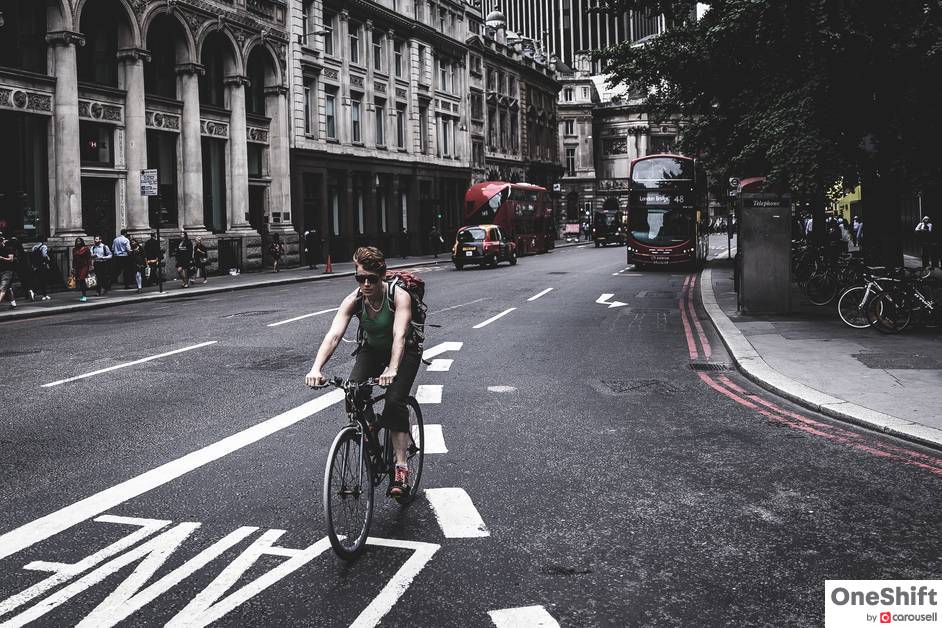Road Cycling - Why Better Legislature is Needed
The authorities have been pretty non-commital about rules surrounding road cycling, with the ambiguity leading to constant debate and unhapiness between the cycling and driving communities. Perhaps clearer rules and structures would be more sustainable in the long run, for the benefit of all parties.

Since Singapore’s return to a heightened alert phase over a month ago, there has been a major uptake in cycling activities. Perhaps induced by a lack of activities to engage in, people of all shapes, sizes, and experience levels have started taking to the street on two wheels. This influx of new riders have brought new versions of old problems into the road safety equation, with their relative inexperience presenting safety concerns surrounding the largely unregulated road cycling environment of Singapore. Are they to blame though? - I’d probably lean towards no. Having grown up in Singapore, one is indoctrinated into an environment of clear structure and firm governance. We are told what we can and cannot do, and as such, it is in our nature to find the loophole and exploit it - It’s just who we are. When the stance on road cycling regulations are as soft and grey as they are now, conflict between the road cycling community and the driving community are bound to arise. People need to know what is clearly allowed, what is clearly not, and where the accountabilities lie when things happen. While a majority of road cyclists, especially those who treat it as a more serious sport, tend to abide by the guidelines, there are plenty of lone riders or leisure riders who continue to pose a major safety concern for all road users. Whether it's not stopping at red lights, hopping onto the pedestrian crossing when it's convenient, riding without a helmet and safety lights, riding two abreast at a leisurely pace on rental bicycles - you name it, we’ve seen it.
As a driver myself, I am often frustrated by road cyclists. However, upon further reflection, it would seem that I am not actually frustrated with the road cyclist, but rather with the lack of legislature surrounding the relationship between drivers and road cyclists. When I am dealing with a fellow motorist on the road, I have a good understanding of where I am right, and where I am wrong, and I act accordingly, even if the end result is unfavourable toward me. However, without firm rules and a defined code of conduct, it is hard to apply that same objectivity when encountering a road cyclist. There is always this ambiguity, and in this ambiguity lies my greatest frustration toward the situation. Whether we like it or not, road cyclists and drivers will be here to stay, and the continued nonchalance of the authorities is just going to fuel more debate and unhappiness. Establishing a clear set of rules to govern this relationship would be painful for affected parties at first, but I believe that it will be more sustainable in the long run. The step has already been taken with e-bikes, but surprisingly not with regular bicycles, which likely account for a larger number of road users at this current juncture.
The popularity of road cycling has increased most significantly only in the past 5 years. If one considers that the average person probably takes 5 to 8 years after attaining their license before owning their own car, it is safe to assume that a majority of drivers on the road today studied the highway code before road cycling became a thing. Frustrations aside, it is safe to say that we as drivers do not really know how to coexist with cyclists. The thing about the highway code and basic theory test is that it doesn’t just teach a person how to operate a vehicle - It also teaches people about the driving environment that they need to be aware of, the considerations that need to be taken, and the rules that govern the decisions undertaken on the road. Perhaps drivers could benefit from a mandatory online refresher course which includes information about coexisting with cyclists.

In the same vein, I’d expect that road cyclists should be of the same minimum age, and should be made to take and pass their Basic Theory Test before being granted a license to be on the road. If the road cyclist is already a driver with a valid license, then there would of course not be a need for this. Why the same minimum age? - Well the rationale is quite simple. Our highway code does not discriminate between the type of vehicle you are operating, and the minimum age of 18 applies to all types of vehicles. And so it seems, that the minimum age of 18 is more a benchmark of maturity, rather than a benchmark of capability in operating a certain vehicle. If the latter were true, then should the minimum age to operate an automatic car be 16, since it is easier to operate than a manual car? - I think not. With that in mind, it seems utterly ridiculous that a 14 year old teenager could legally be allowed to operate a bicycle on the road, and is expected to somehow display the same caution and discretion of drivers who are many years older. As with the recent case of the 14 year old cyclist dying in an accident with a truck at Marina East Drive, while it was most unfortunate, perhaps the teenager should never have been allowed on the road in the first place. Basic road education is important - You would be surprised at how many people still cycle outside of the cycling lane and onto the road along Changi Coast Road, despite the availability of a purpose built cycling lane.
While none of us hope for road incidents, they are bound to happen, and probably do on a fairly frequent basis. When two motorists on the road get into an accident, there are proper procedures to work with it. In Singapore, all vehicles need to be operated with an insurance policy. This serves two purposes. Firstly, it ensures that the victim of the accident is protected and has a legal avenue to claim damages caused to his vehicle, from the vehicle that caused the accident. Secondly, insurance also protects against crippling debt - for e.g. Imagine if you have hit a brand new Ferrari, and the resulting repairs amount to say $50,000. If you did not have insurance, you would be liable to pay for the damages on your own, and are personally liable as an individual if you do not pay.

Now let’s imagine an extremely probable scenario where a cyclist squeezes past a car and scratches the body panel, or perhaps a cyclist isn’t able to stop in time and slams into the rear of a car, denting the rear end, with the rider sent flying into the rear windscreen, shattering it. Would a 14 year old be liable to pay for these damages? Could his or her parents pay for these damages? What if his or her parents aren’t well to do? The point is, if you don’t have the means to pay for insurance, then you can’t afford to be on the road - While it might seem harsh to try and impose a mandatory insurance policy on road cyclists, one must consider if it's fair to a driver to have to claim repairs on his own insurance just because a non-regulated user of the road can’t afford to bear the cost of their mistakes.
Find the right car to carry your bike! We have a fine selection of pre-loved SUVs, MPVs, Sedans and Estates to suit your fancy.
Credits:


Get the Best Price for your used car
from 500+ dealers in 24 hours

- Convenient and Hassle-Free
- Consumer Protection
Transparent Process
With No Obligation








